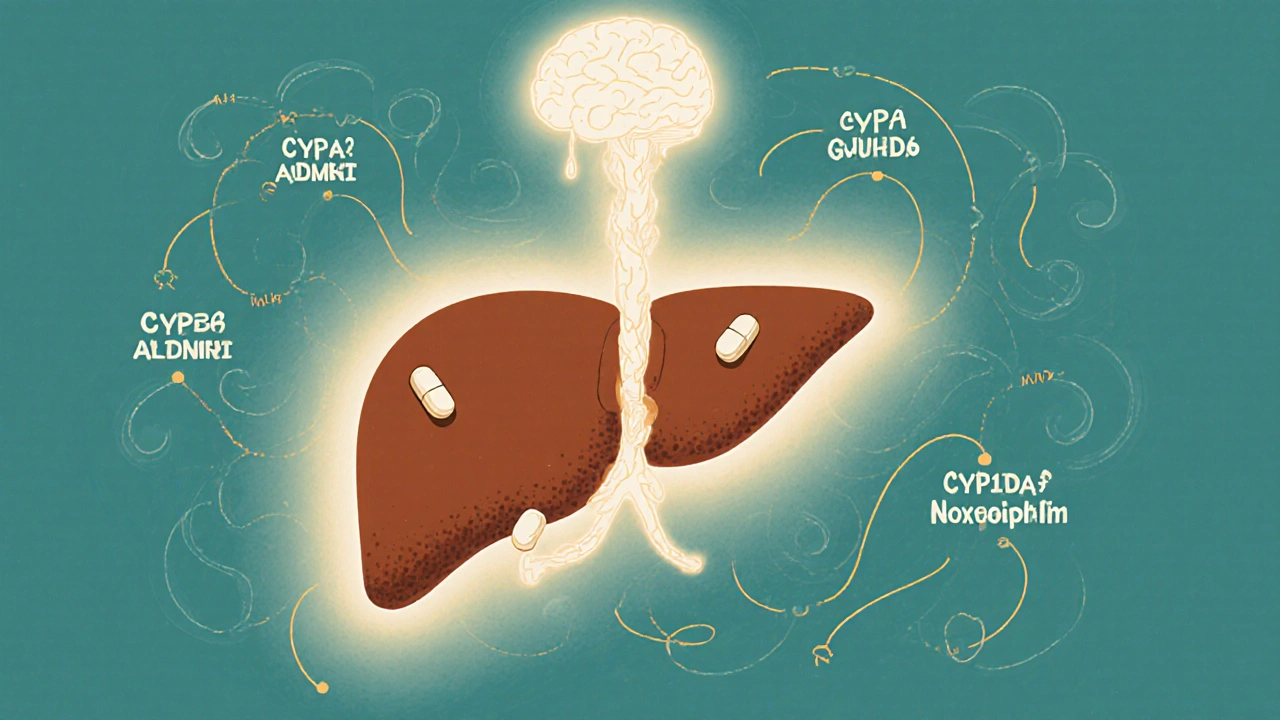
When you take duloxetine for depression or chronic pain, your mind is focused on feeling better-not on your liver. But that organ, quietly working behind the scenes, is processing every pill you swallow. For many people, duloxetine is safe and effective. For others, it can cause unexpected stress on the liver. Understanding how this medication interacts with liver function isn’t just about avoiding side effects-it’s about staying safe while getting the relief you need.
What Duloxetine Does in Your Body
Duloxetine, sold under the brand name Cymbalta among others, is a serotonin-norepinephrine reuptake inhibitor (SNRI). It works by increasing levels of two key brain chemicals-serotonin and norepinephrine-that help regulate mood, pain signals, and even sleep. It’s prescribed for major depressive disorder, generalized anxiety disorder, diabetic nerve pain, fibromyalgia, and chronic musculoskeletal pain.
But here’s the thing: once you swallow a duloxetine capsule, your body doesn’t just use it in the brain. About 70% of the drug is metabolized by your liver. That means your liver breaks it down into smaller pieces so your kidneys can flush it out. This process isn’t harmless. It uses up liver enzymes-especially CYP1A2 and CYP2D6-and can lead to buildup of byproducts that may irritate liver cells.
How Common Is Liver Damage from Duloxetine?
Most people take duloxetine without any liver issues. But it’s not risk-free. According to data from the U.S. Food and Drug Administration (FDA) and the LiverTox database maintained by the National Institutes of Health, duloxetine causes noticeable liver enzyme elevations in about 1 in 100 users. That means your blood tests might show higher-than-normal ALT or AST levels-signs your liver is under stress.
Severe liver injury from duloxetine is rare-fewer than 1 in 10,000 people. But when it happens, it can be serious. Cases reported include hepatitis, cholestasis, and even acute liver failure requiring transplant. These aren’t theoretical risks. They’ve been documented in medical journals like Hepatology and Drug Safety, often in people with no prior liver disease.
Who’s at Higher Risk?
Not everyone is equally vulnerable. Certain factors make liver problems more likely:
- Pre-existing liver conditions-like fatty liver disease, hepatitis B or C, or cirrhosis-make your liver less able to handle extra stress.
- Alcohol use-even moderate drinking-adds another metabolic burden. Alcohol and duloxetine both rely on the same liver enzymes, creating competition and increasing toxicity risk.
- Older age-liver function naturally slows after age 65. Older adults clear duloxetine more slowly, leading to higher drug levels in the blood.
- High doses-doses above 60 mg per day increase liver metabolism demands. The FDA warns that doses above 120 mg daily carry higher risk.
- Other medications-taking duloxetine with acetaminophen, statins, antifungals, or certain antibiotics can overload your liver’s detox pathways.
One 2023 study in the Journal of Clinical Psychopharmacology followed 450 patients on long-term duloxetine. Those who drank more than two alcoholic drinks a day were nearly four times more likely to show abnormal liver enzymes than non-drinkers.
What Symptoms Should You Watch For?
Liver damage doesn’t always cause obvious symptoms at first. That’s why regular blood tests matter. But if you start noticing any of these signs, don’t wait:
- Dark urine-like tea or cola
- Yellowing of the skin or eyes (jaundice)
- Unexplained fatigue or weakness
- Abdominal pain, especially in the upper right side
- Nausea or vomiting that won’t go away
- Loss of appetite or unexplained weight loss
- Itchy skin without rash
These aren’t normal side effects of duloxetine. They’re red flags. If you experience even one of these, contact your doctor immediately. Don’t stop the medication on your own-sudden withdrawal can cause serious problems. But don’t ignore these signals either.
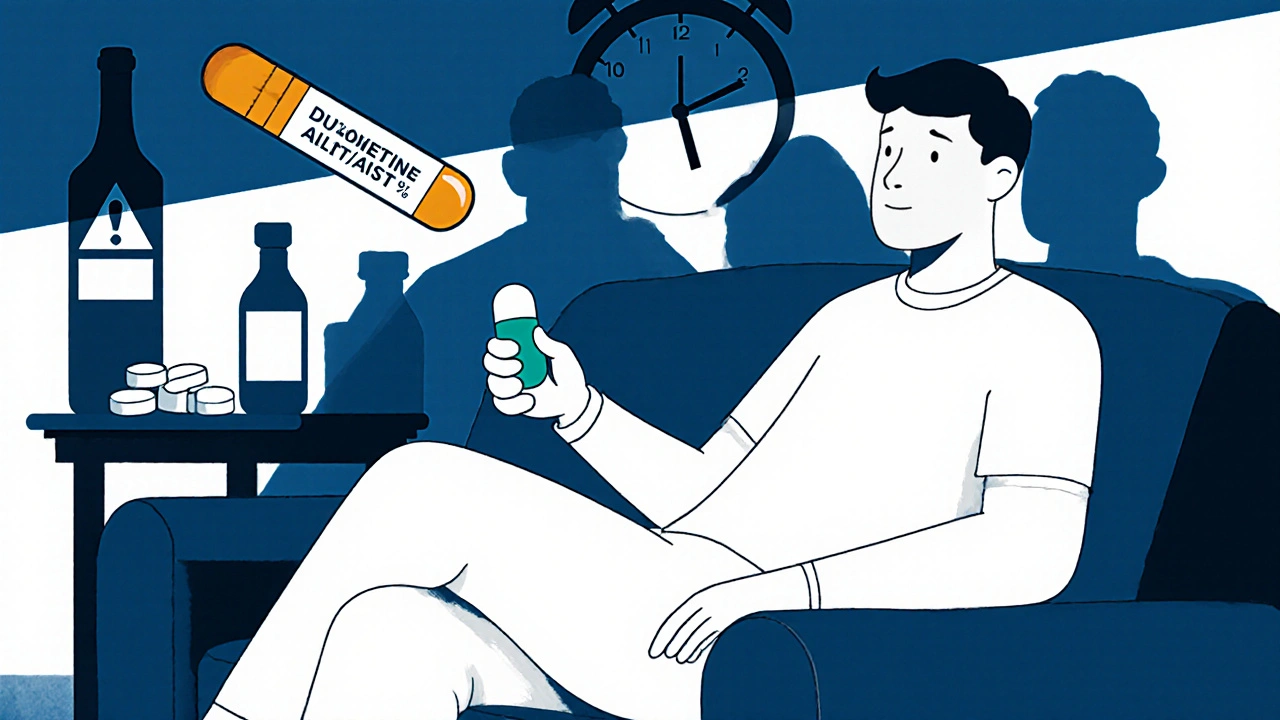
Testing and Monitoring Your Liver
Before starting duloxetine, your doctor should check your liver enzymes with a simple blood test: ALT, AST, bilirubin, and alkaline phosphatase. This baseline helps spot changes later.
After you start taking it, follow-up tests are usually done at 2 weeks, 4 weeks, and then every 3 months if you’re on long-term treatment. If your ALT or AST levels rise more than three times the upper limit of normal, your doctor may pause the drug to see if your liver recovers.
Some patients, especially those with existing liver disease, need testing every month. There’s no one-size-fits-all rule-but skipping tests because you feel fine is risky. Liver damage can progress silently.
What If Your Liver Is Already Damaged?
If you have mild fatty liver disease or past hepatitis, duloxetine isn’t automatically off-limits. But your doctor will likely start you on a lower dose-maybe 30 mg instead of 60 mg-and monitor you more closely.
For people with moderate to severe liver impairment (Child-Pugh Class B or C), duloxetine is generally not recommended. The drug’s label says it should be avoided in these cases because the liver can’t clear it properly, leading to dangerous buildup.
If you’ve had liver injury from duloxetine in the past, you should never take it again. Re-exposure-even years later-can trigger a faster, more severe reaction.
Alternatives to Duloxetine
If liver health is a concern, there are other options. Here’s how some common antidepressants compare:
| Medication | Liver Metabolism | Typical Risk of Liver Injury | Notes |
|---|---|---|---|
| Duloxetine (Cymbalta) | CYP1A2, CYP2D6 | Low to moderate | Higher risk with alcohol or high doses |
| Escitalopram (Lexapro) | CYP2C19, CYP3A4 | Very low | Often preferred for patients with liver concerns |
| Fluoxetine (Prozac) | CYP2D6, CYP2C9 | Low | Long half-life-slower clearance |
| Mirtazapine (Remeron) | CYP1A2, CYP2D6, CYP3A4 | Moderate | Can cause weight gain and sedation |
| Venlafaxine (Effexor) | CYP2D6 | Low | Similar to duloxetine but less liver burden |
Escitalopram is often the go-to alternative when liver health is a priority. It’s metabolized differently and rarely causes liver enzyme spikes. Venlafaxine is another option-though it still requires monitoring, its risk profile is slightly better than duloxetine’s.
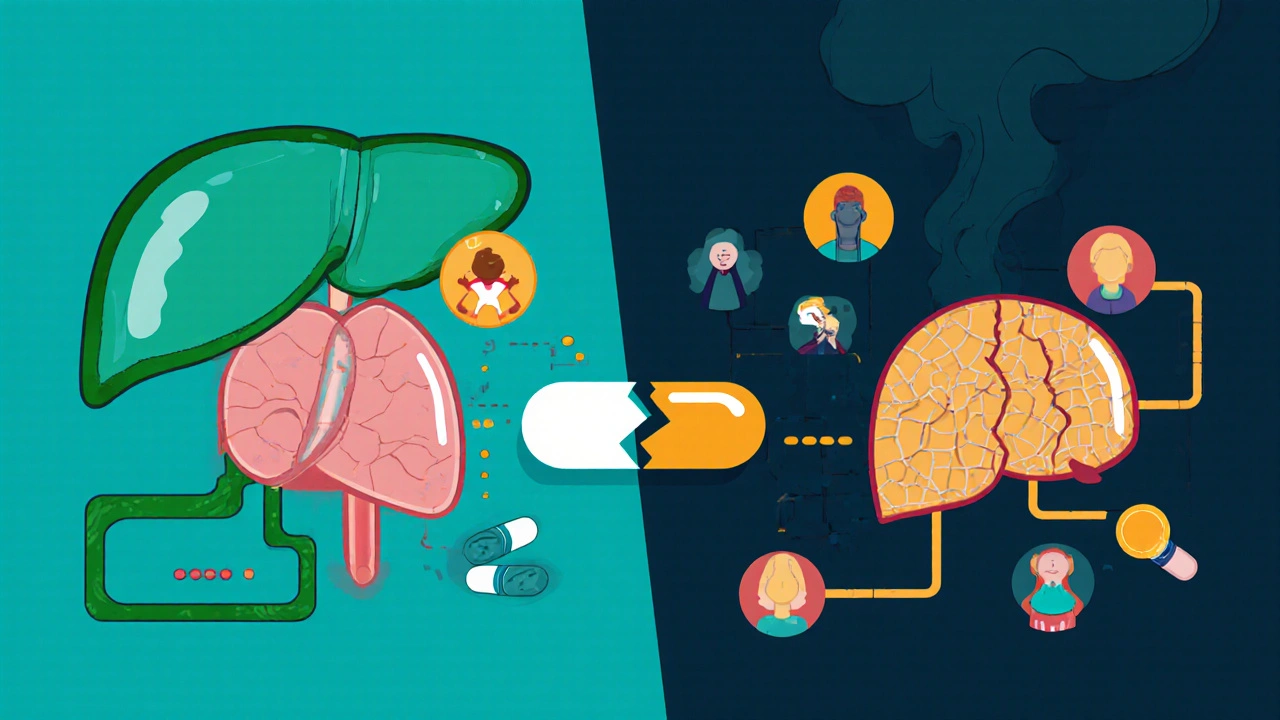
How to Protect Your Liver While Taking Duloxetine
If your doctor says duloxetine is right for you, here’s how to reduce your risk:
- Avoid alcohol completely. Even one drink a day increases risk. No exceptions.
- Don’t take extra painkillers. Avoid acetaminophen (Tylenol), especially over 2,000 mg daily. NSAIDs like ibuprofen are safer for the liver but harder on your stomach.
- Keep your dose as low as possible. Start at 30 mg. Only increase if needed-and only under supervision.
- Get blood tests on schedule. Don’t skip them because you feel fine.
- Watch your diet. Reduce processed sugars and saturated fats. A healthy liver handles stress better.
- Report any new symptoms. Fatigue, nausea, or dark urine? Call your doctor the same day.
There’s no magic supplement or herb that protects your liver from duloxetine. Milk thistle, NAC, or vitamin E won’t cancel out the drug’s effects. In fact, some herbal products can interfere with liver enzymes and make things worse.
What Happens If You Stop Duloxetine Because of Liver Issues?
If your liver enzymes rise and your doctor decides to stop duloxetine, recovery is usually complete. In most cases, enzyme levels return to normal within 4 to 8 weeks after stopping the drug. No permanent damage occurs if caught early.
But stopping abruptly can cause withdrawal: dizziness, brain zaps, nausea, anxiety, or flu-like symptoms. Your doctor will help you taper slowly-usually over 2 to 4 weeks-to avoid this.
Once you’ve recovered, you should never take duloxetine again. The risk of recurrence is high, and the next reaction could be worse.
Final Thoughts: Balance and Awareness
Duloxetine helps millions manage pain and depression. But it’s not a harmless pill. Your liver is doing heavy lifting every time you take it. The key isn’t fear-it’s awareness. If you’re on this medication, know your risks. Get tested. Avoid alcohol. Report symptoms early. Talk to your doctor about alternatives if your liver doesn’t respond well.
You deserve relief from pain or depression. But you also deserve a healthy liver. The two aren’t mutually exclusive-you just need to be smart about how you get there.
Can duloxetine cause permanent liver damage?
In rare cases, yes. Severe liver injury from duloxetine can lead to permanent scarring or failure, especially if not caught early. But most people who develop elevated liver enzymes recover fully once they stop the drug. The risk of permanent damage is less than 0.01% when monitored properly.
Is it safe to take duloxetine with other medications?
It depends. Duloxetine interacts with many drugs that affect the same liver enzymes-especially CYP1A2 and CYP2D6. Medications like fluvoxamine, ciprofloxacin, or theophylline can increase duloxetine levels and raise liver stress. Always give your doctor a full list of everything you take, including over-the-counter drugs and supplements.
How long does it take for liver enzymes to return to normal after stopping duloxetine?
Most people see improvement within 2 to 4 weeks. Full recovery usually happens by 8 weeks. If enzymes haven’t dropped after 12 weeks, further testing is needed to rule out other causes of liver damage.
Can I drink alcohol occasionally while on duloxetine?
No. Even one drink can increase your risk of liver injury. Alcohol and duloxetine compete for the same liver enzymes, slowing down metabolism and increasing toxic byproducts. The safest choice is complete abstinence while taking this medication.
Are there natural ways to support liver health while taking duloxetine?
The best support is avoiding toxins-alcohol, unnecessary medications, and processed foods. Eat whole foods, stay hydrated, and maintain a healthy weight. Supplements like milk thistle or NAC haven’t been proven to protect against duloxetine-related liver stress and may interfere with metabolism. Stick to lifestyle changes, not unproven remedies.
Should I get a liver ultrasound before starting duloxetine?
Not usually. Blood tests for liver enzymes are the standard first step. An ultrasound is only recommended if you have symptoms, known liver disease, or abnormal blood work. Routine imaging isn’t needed for healthy people starting duloxetine.
If you’re taking duloxetine and have concerns about your liver, talk to your doctor. Don’t assume it’s fine because you feel good. Your liver doesn’t complain until it’s overwhelmed.
jackie cote
Duloxetine isn't a snack. It's a tool with real consequences. If you're on it, get baseline labs and stick to the schedule. No exceptions. Your liver doesn't care how you feel about the pill-it just works.
Skipping tests because you 'feel fine' is how people end up in the ER.
ANDREA SCIACCA
AMERICA ISN'T A LABORATORY FOR BIG PHARMA'S DANGEROUS DRUGS!!!
THEY GIVE US THIS STUFF AND THEN SAY 'OH JUST GET BLOOD TESTS' LIKE WE'RE SOME KIND OF ROBOT!!
MY GRANDMA TOOK THIS AND HER LIVER WENT OUT LIKE A CANDLE!!
WHY DO THEY LET THIS HAPPEN??
WE NEED TO BAN THIS AND GO BACK TO NATURAL REMEDIES!!
THEY JUST WANT TO CONTROL US WITH CHEMICALS!!
Camille Mavibas
i just started duloxetine last month 😔
got my first blood test today and everything’s normal 🤞
no alcohol, no tylenol, and i’ve been eating more veggies 🥦
still nervous but… i’m trying 💪
anyone else in the same boat??
Shubham Singh
People treat their bodies like disposable devices. You swallow pills like candy, drink beer on weekends, and then act shocked when your liver screams. This isn't a mystery-it's a consequence of modern laziness.
You want relief? Fine. But don't pretend you're innocent in the damage you cause.
Your liver doesn't owe you a happy life.
Hollis Hamon
I’ve been on duloxetine for 4 years. My ALT has never gone above normal. I get tested every 3 months like clockwork. I don’t drink. I don’t take extra meds. I eat clean. It’s not hard.
It’s just consistent.
There’s no need to panic if you’re doing the basics.
Just pay attention. That’s all.
Adam Walter
Let’s talk about the elephant in the room: duloxetine isn’t the villain-it’s the symptom. We’ve created a culture where we medicate away emotional pain without addressing root causes: isolation, chronic stress, food deserts, wage slavery.
But hey, here’s a pill that makes you numb and a blood test that makes you feel like you’re ‘doing something.’
It’s a beautiful tragedy.
The liver doesn’t care about your trauma-it just metabolizes your coping mechanisms.
And if you’re lucky, your doctor is paying attention.
If not? Well, welcome to the slow-motion collapse of a body that was never meant to carry this kind of weight.
Let’s stop pretending the problem is the drug and start asking why we need it in the first place.
Gurupriya Dutta
My mother had fatty liver and was prescribed duloxetine for anxiety. Her doctor started her at 30 mg and did monthly labs. After 6 months, her enzymes were still normal.
She said the medication helped her finally sleep again after years of panic attacks.
It’s not about fear. It’s about careful management.
Thank you for writing this. It’s the kind of info we need-not scare tactics, but clear steps.
Bhanu pratap
Look, I know people are scared of meds-but this isn’t some magic bullet. It’s a tool. And like any tool, you gotta use it right.
Don’t be the guy who takes 120 mg because ‘it worked better last time’ and then blames the doctor.
Stay low, stay clean, stay tested.
You got this. One pill at a time.
Meredith Poley
Oh wow, another article telling people to avoid alcohol while on a liver-metabolized drug.
Groundbreaking.
Next up: ‘Water is good for kidneys.’
Did we really need a 2000-word essay to tell us not to mix booze with meds?
And milk thistle? Please. That’s just herbal wishful thinking wrapped in a $30 bottle.
Save the drama. The science is simple.
Mathias Matengu Mabuta
While I appreciate the clinical precision of this post, I must emphasize that the ethical implications of pharmaceutical promotion in the United States remain profoundly concerning. The normalization of long-term psychotropic use, particularly in populations without adequate psychotherapeutic infrastructure, constitutes a systemic failure of public health policy. One cannot, in good conscience, recommend pharmacological intervention as a primary modality when socioeconomic determinants of mental health remain unaddressed. Furthermore, the absence of any discussion regarding the commodification of mental illness by corporate entities renders this article, despite its factual accuracy, morally incomplete. One must ask: who benefits from the continued prescription of duloxetine in the absence of holistic care? The answer, regrettably, is not the patient.

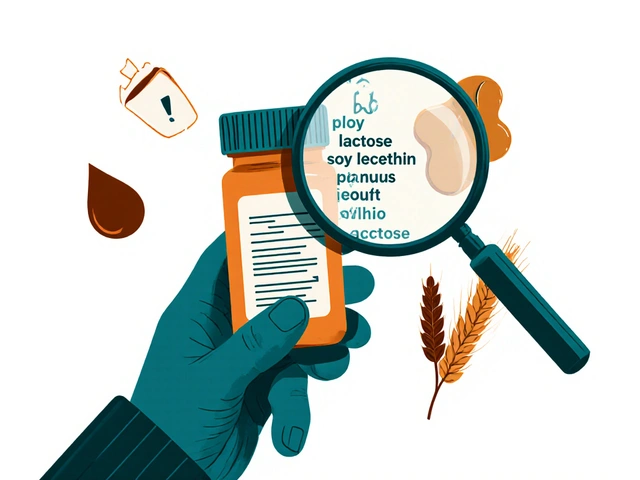



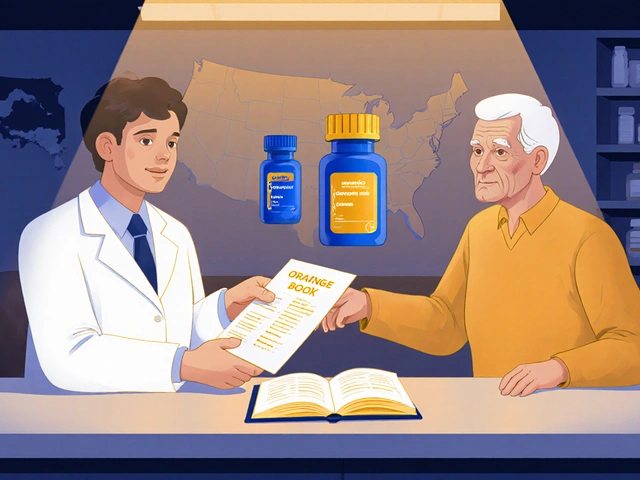
Write a comment